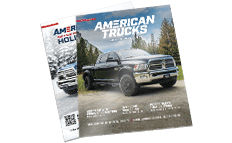
Roof Top Tents – Pros, Cons, and Why You Want One
By Patrick Rich - November 3, 2020
Easy camping made possible by CVT tents.
I’ve never been the patient type so let me cut right to the chase – If you want a roof top tent, buy one.
Look, let’s all agree to stop pretending that the heart isn’t a major factor in this decision and move on.
Agreed?
Should you buy a roof top tent?
That’s a much better question.
Roof top tents are a big part of the insanely popular overland movement that is rolling over the country right now and the appeal is obvious; A big comfy bed that travels with you and is ready at a moments notice, making wherever you park your own private campground.
What are the different kinds of tents out there?
Pros and Cons
How do they compare to other ways to camp?
What to look for
So what do you look for in a quality, long lasting roof top tent?
Find a reputable brand – The ARB Simpson tent was the default choice for years and its design is the foundation for most manufactures’ tents. TJM is also a well-known Australian brand. In many cases some manufactures simply rebrand tents like the ARB the Simpson tent, pay close attention to the design and you’ll spot them.
Size to your vehicle – It may be tempting to go for the bigger tent “just in case” but you can easily “over-tent” a smaller vehicle and on off-road vehicles more tent is just more weight up top which any pro will tell you is a bad idea. Big vehicle for your big family? Tuff Stuff currently has what they claim to be the largest RTT on the market. At 94×79 inches floor space, it’s more than a foot wider than a king bed.
Construction – Compare fabric type and weight, as well as mattress thickness. These should be specs a manufacture will list, or they can provide to you upon request. Thicker isn’t necessarily better (remember, more tent, more weight) but a thick nylon ripstop or cotton/poly ripstop blend will serve you for years. Yakima makes a lighter weight folding option for smaller vehicles but likely won’t be as abusive resistant. Check that the base of popup and clamshell types are rigid and up to the abuse.
Weather protection – Some manufactures will sell a “severe weather” or insulation kit for cold and/or wet environment. Check to see if that’s an option if that’s important to your climate. Be sure to get a moisture barrier as well. Some tents come with one standard; some are optional. Tuff stuff makes a moisture barrier that will work in most similarly sized tents if you don’t have one. Even in arid environments, it’s a good idea.
Consider your priorities – Like to travel light and fast? Consider spending more on a faster RTT like a pivot. Traveling with a family? A folder will be your best bet. Need to carry a surfboard or bikes on your RTT? Find a type and brand that allows for additional accessory mounting.
Hopefully that you’ve got a picture that is more complete than a few shots on Instagram can provide. Most importantly go out and explore. I’ll see you on the trail.

